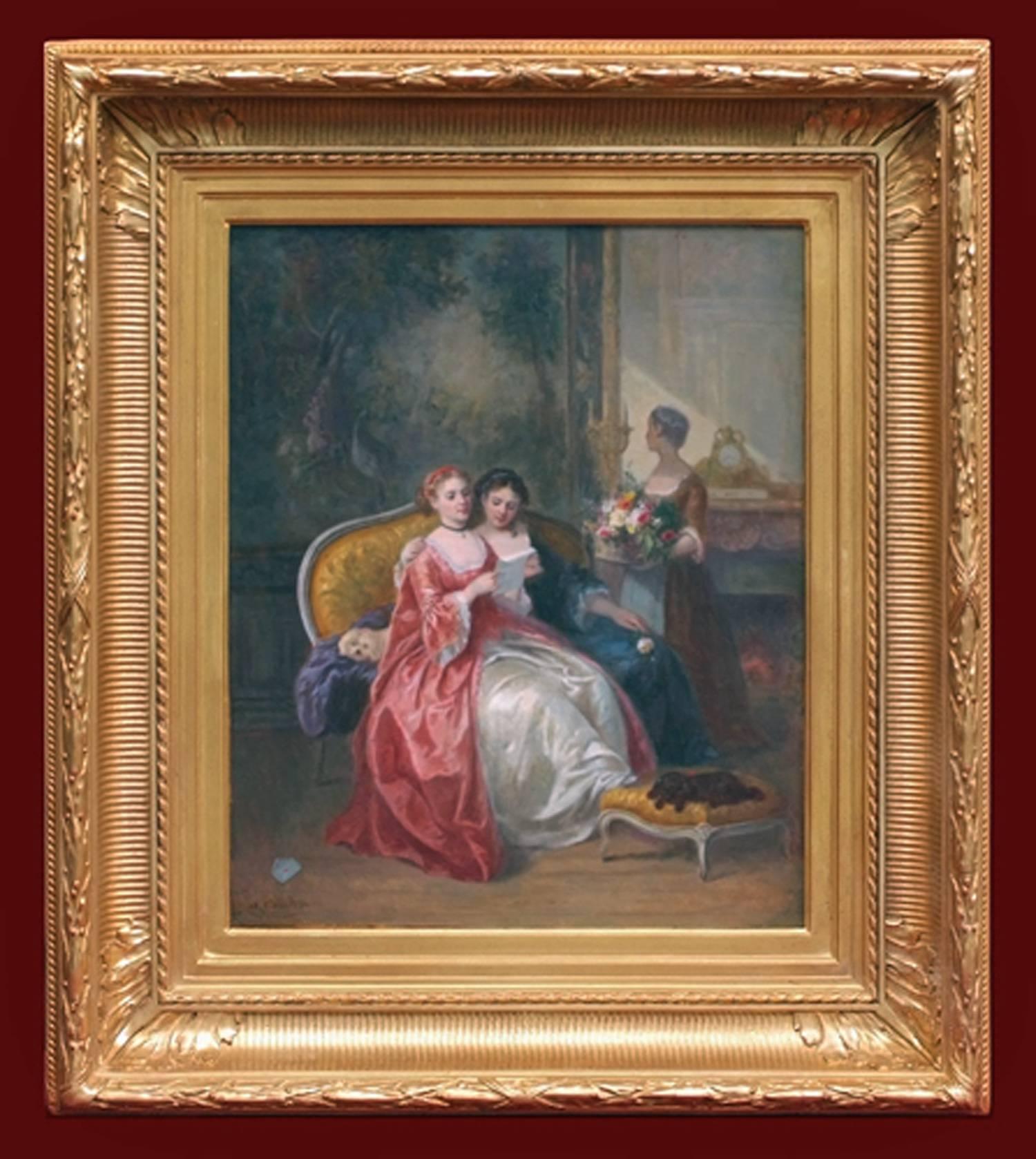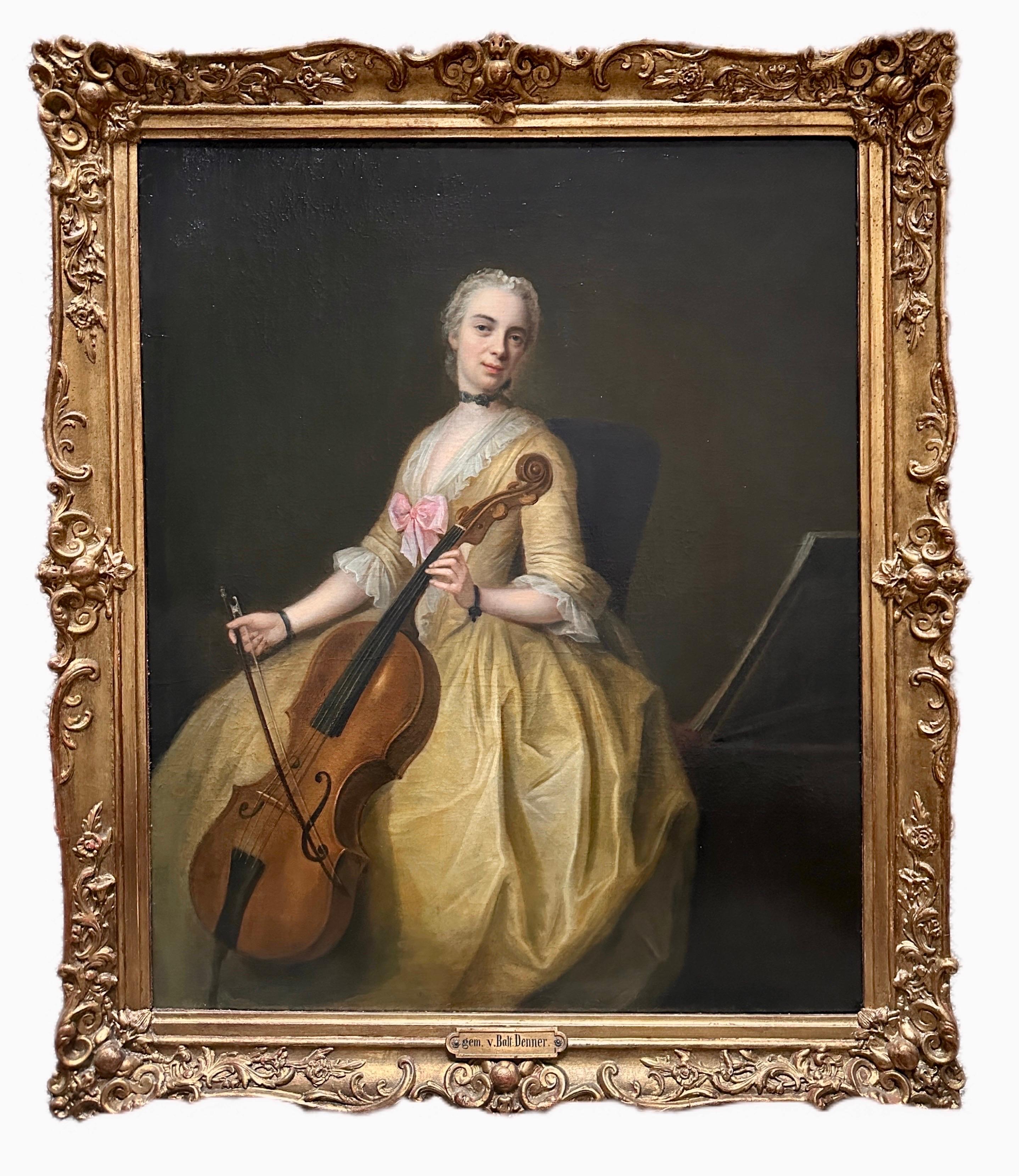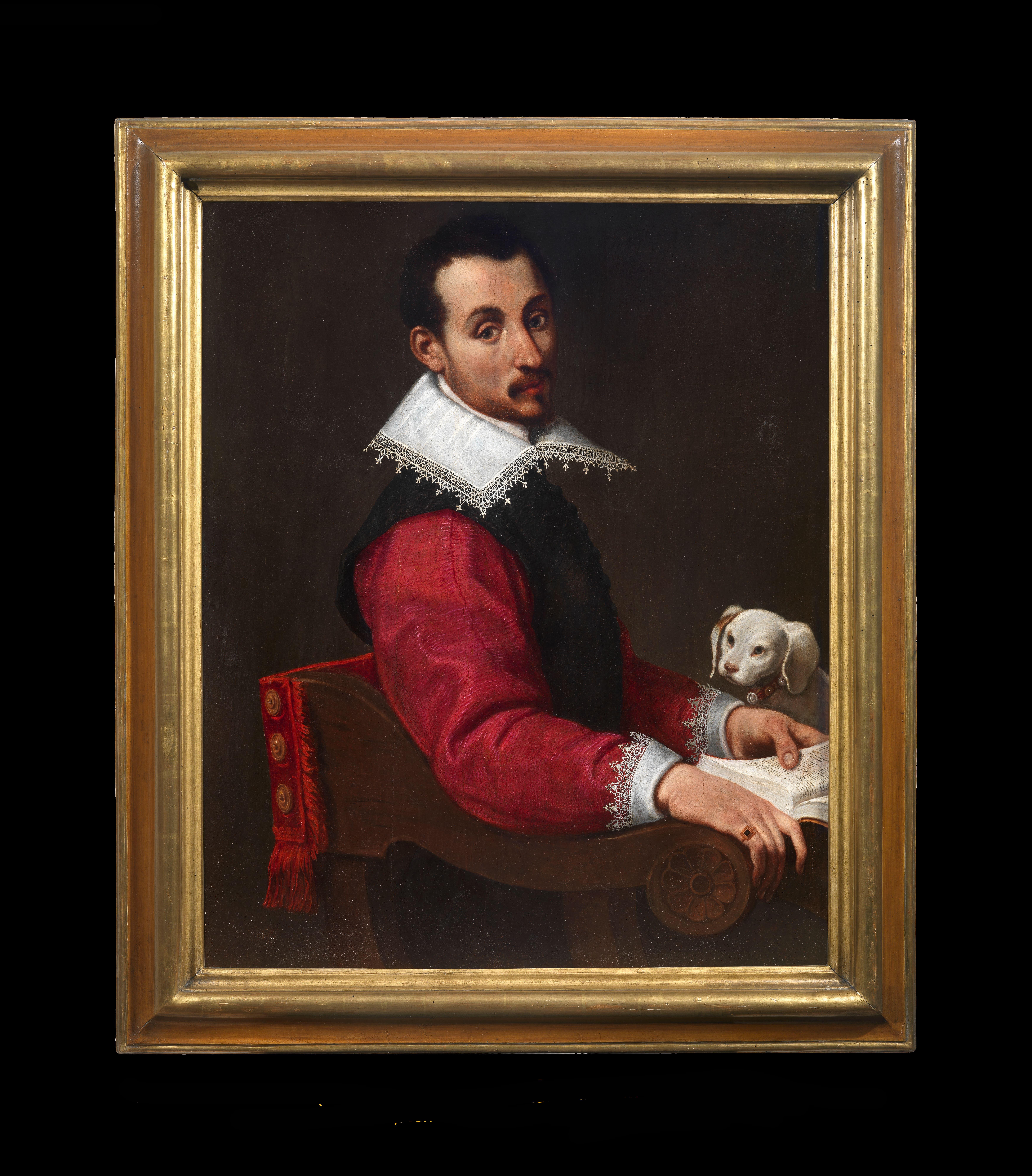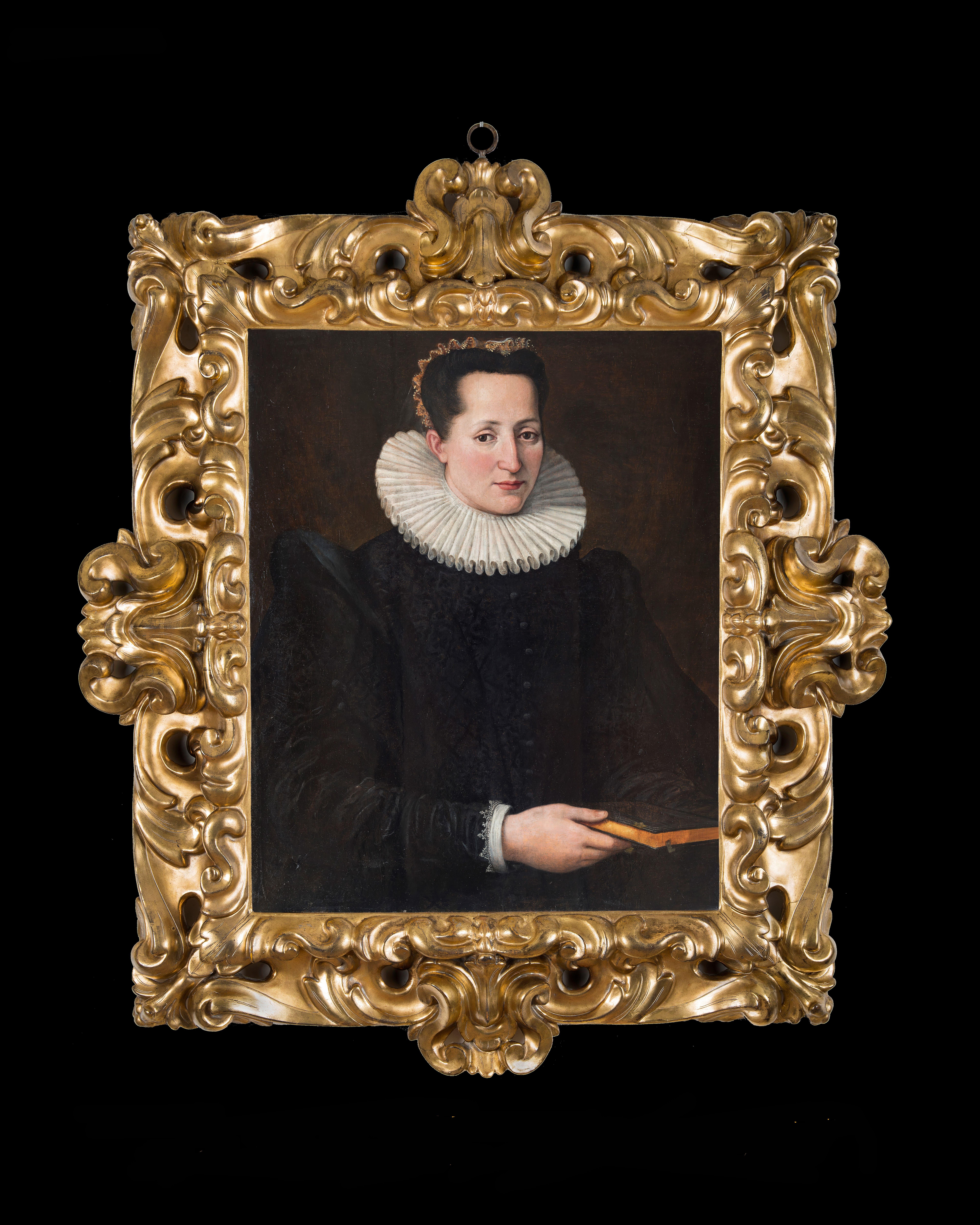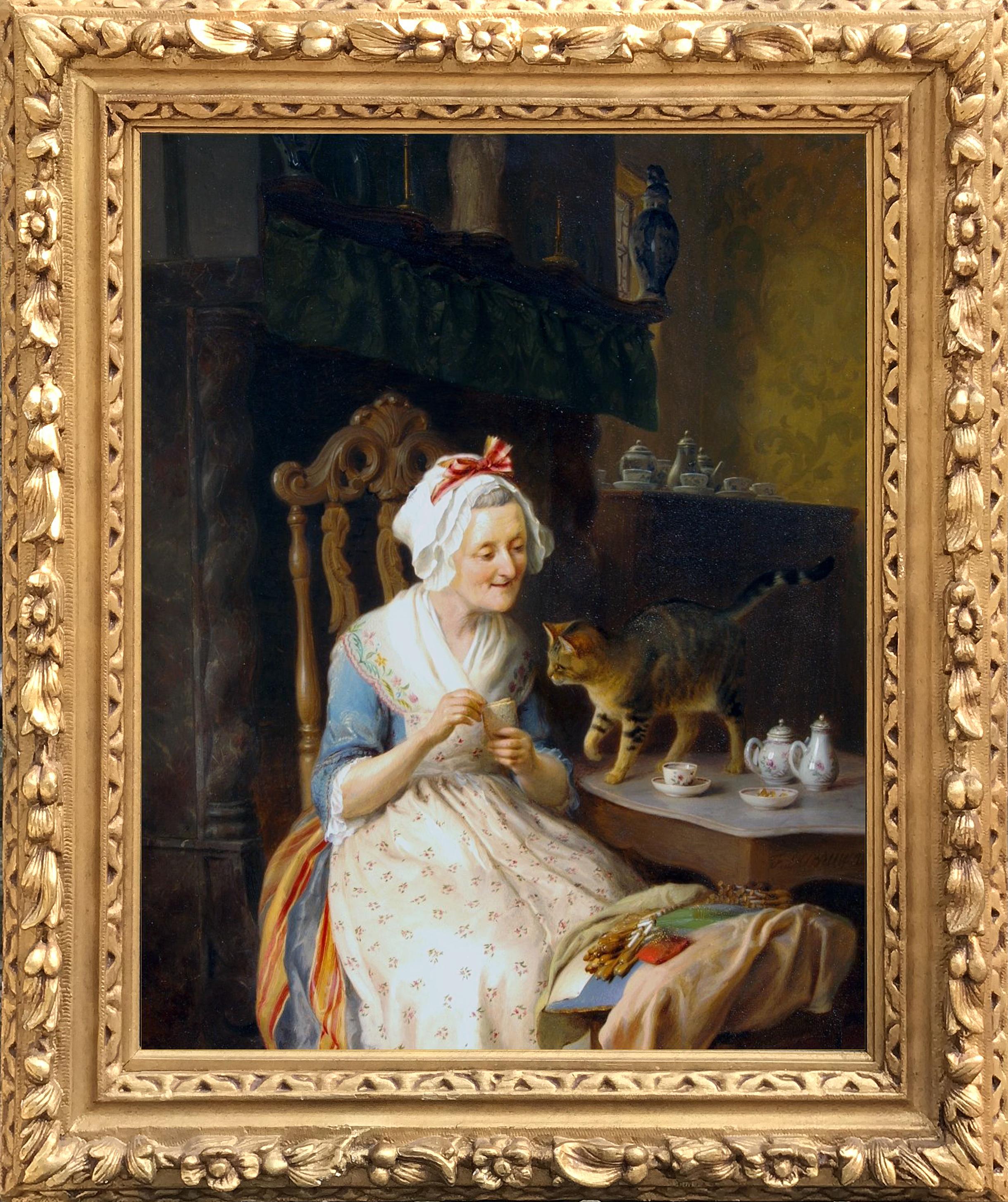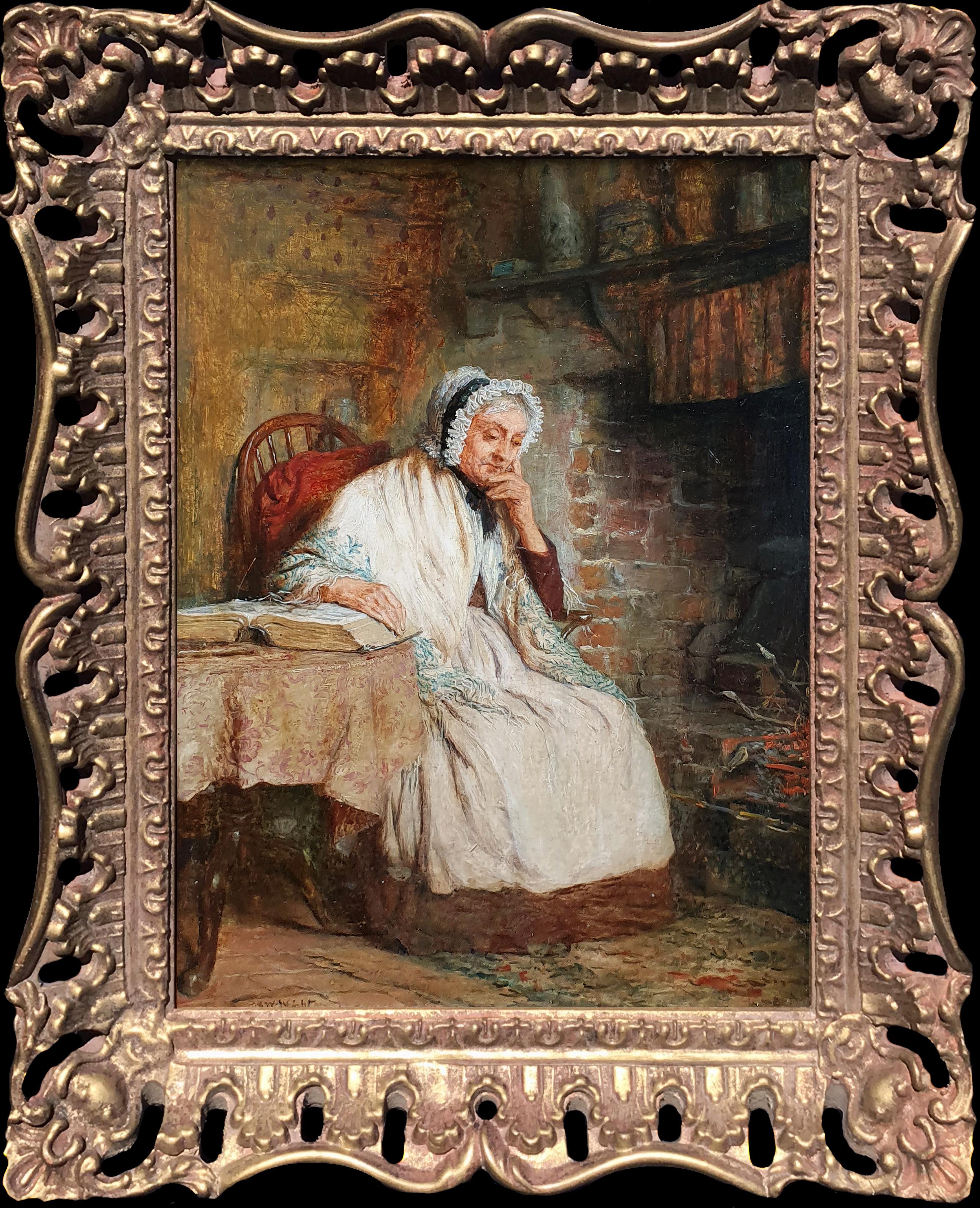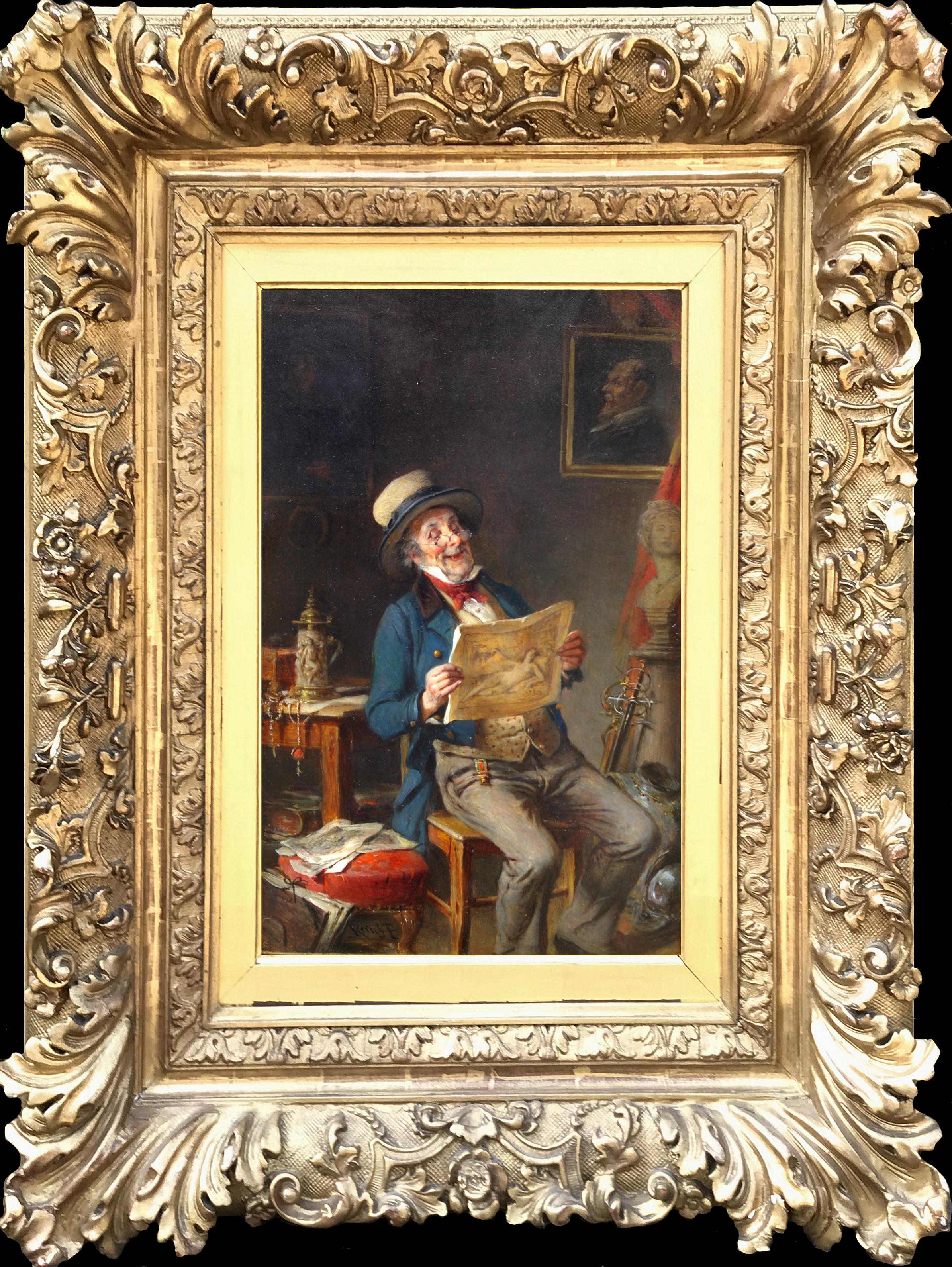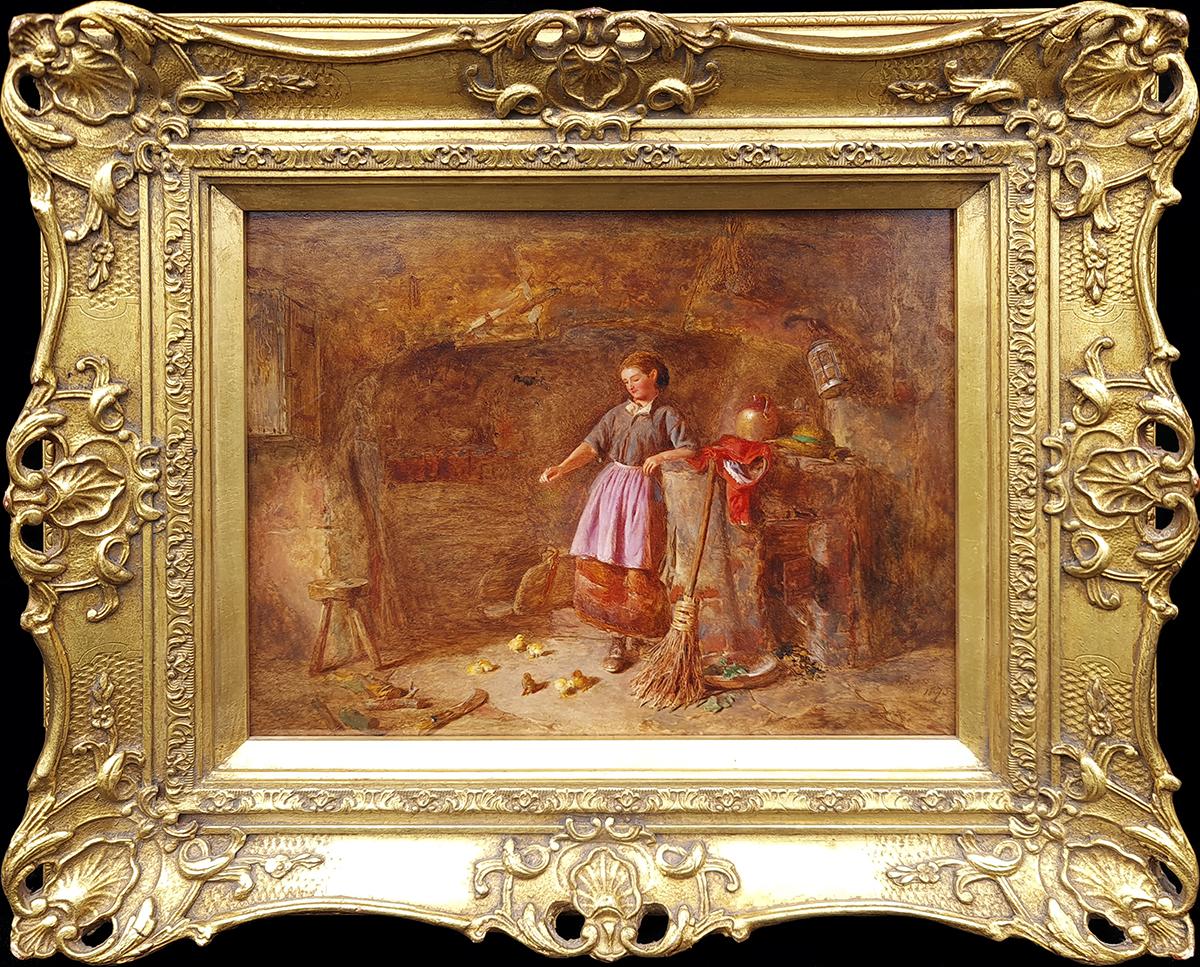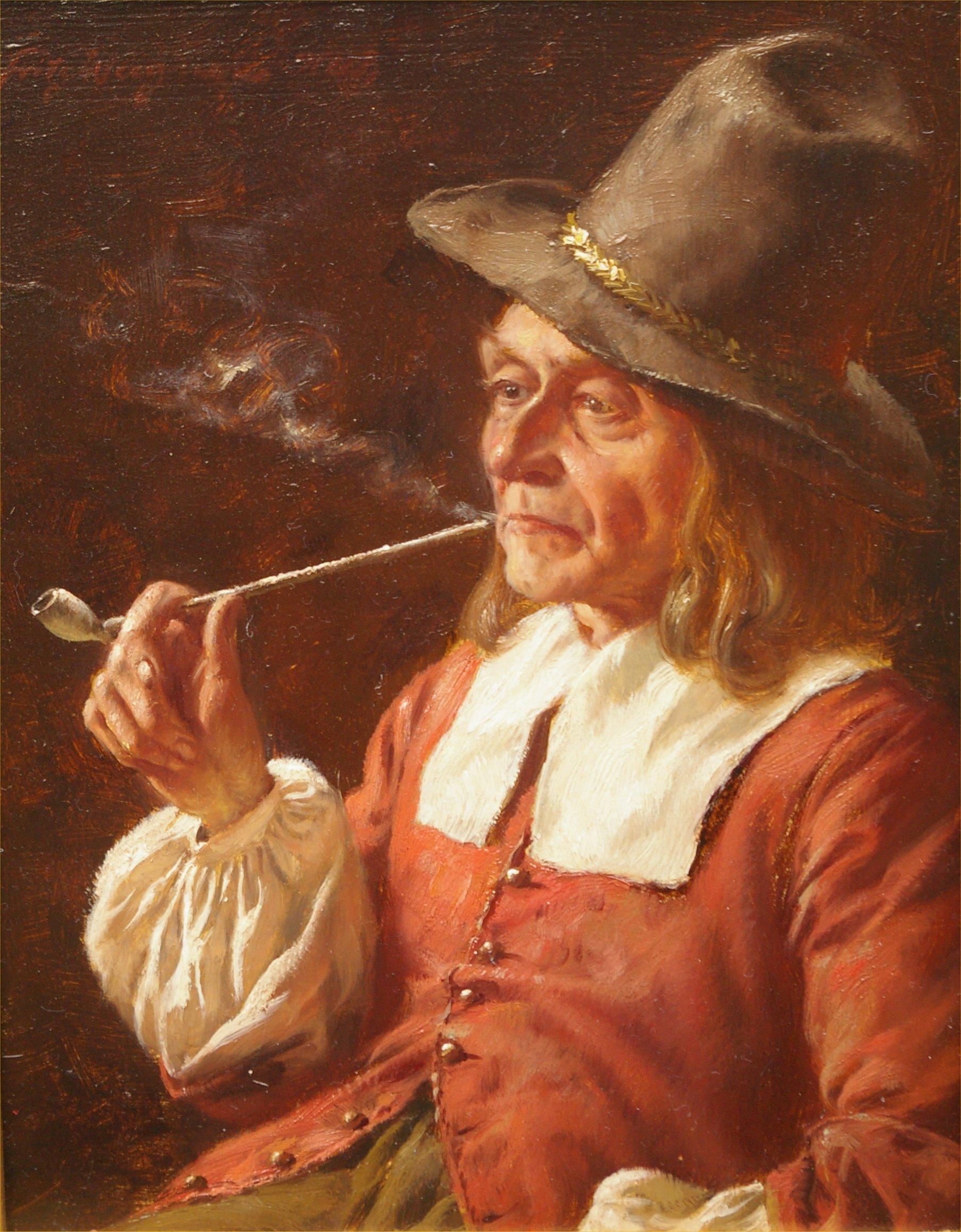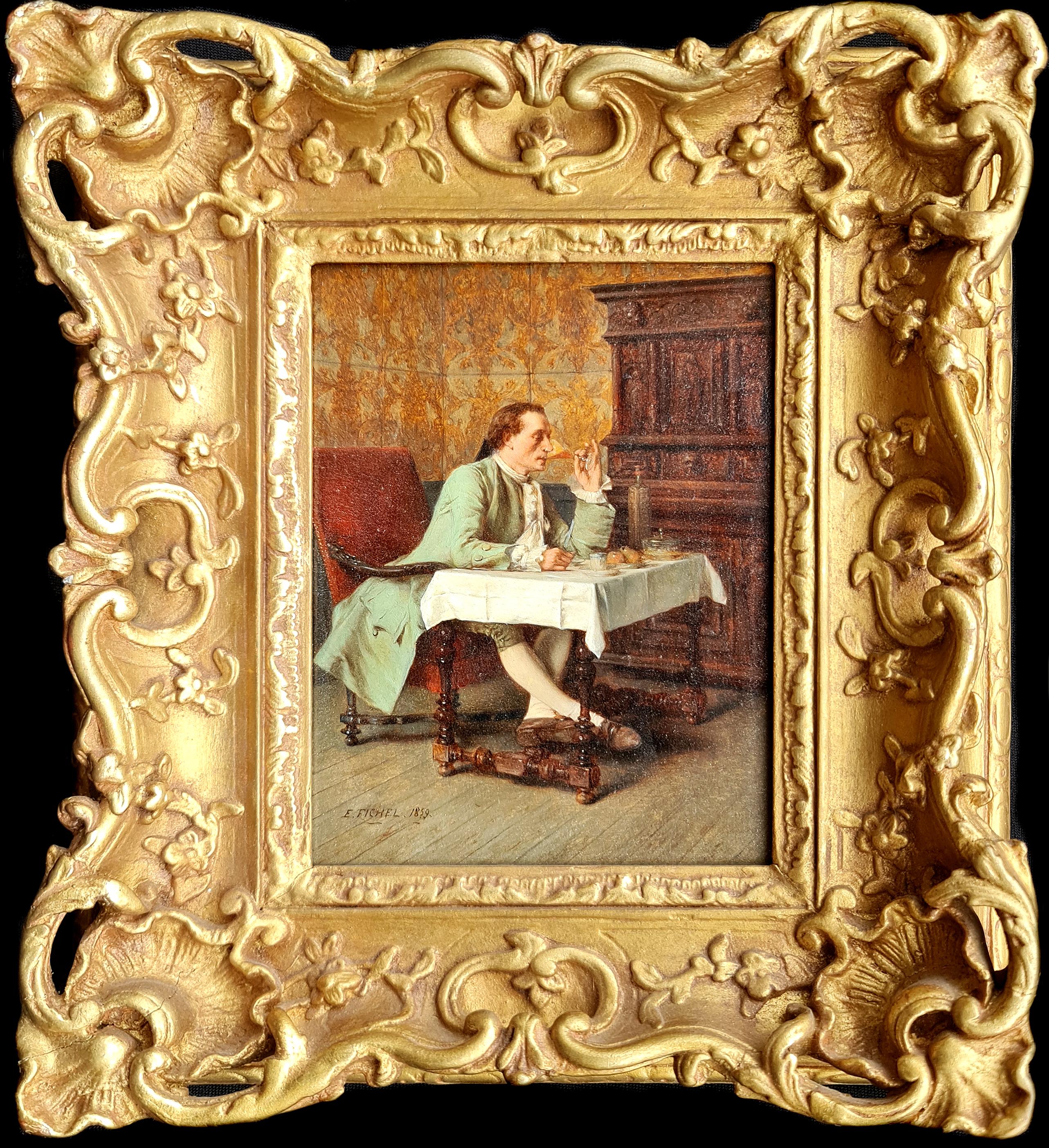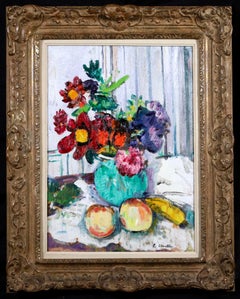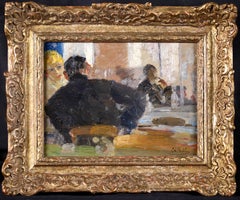
Lady with Flower
View Similar Items
Want more images or videos?
Request additional images or videos from the seller
1 of 5
Willem Van MierisLady with Flower1690
1690
About the Item
- Creator:Willem Van Mieris (1662 - 1747, Dutch)
- Creation Year:1690
- Dimensions:Height: 10 in (25.4 cm)Width: 8 in (20.32 cm)
- Medium:
- Movement & Style:
- Period:
- Condition:
- Gallery Location:Marlow, GB
- Reference Number:Seller: LFA0374BF1stDibs: LU41531676943
About the Seller
5.0
Platinum Seller
These expertly vetted sellers are 1stDibs' most experienced sellers and are rated highest by our customers.
Established in 2001
1stDibs seller since 2016
671 sales on 1stDibs
Typical response time: 3 hours
More From This SellerView All
- Flowers & Fruits - Colourist Still Life Oil Painting by George Leslie HunterLocated in Marlow, BuckinghamshireSigned still life oil on panel circa 1925 by colourist painter George Leslie Hunter. This beautifully brushed piece depicts a red, purple, pink an...Category
1920s Post-Impressionist Still-life Paintings
MaterialsPanel, Oil
- Le Cafe de la Place Blanche - Post Impressionist Oil, Figures by Elie PavilBy Elie Anatole PavilLocated in Marlow, BuckinghamshireSigned figures in interior oil on panel circa 1915 by Russian-born post impressionist painter Elie Anatole Pavil. The piece depicts a couple in the famous "White Cross" cafe at the P...Category
1910s Post-Impressionist Figurative Paintings
MaterialsOil, Panel
- Dimanche - Post Impressionist Figurative Interior Oil Painting Paul Elie GernezBy Paul-Élie GernezLocated in Marlow, BuckinghamshirePost impressionist signed and dated oil on paper laid on panel by French painter Paul Elie Gernez. The work depicts a woman wearing a black dress with...Category
1920s Post-Impressionist Figurative Paintings
MaterialsPaper, Laid Paper, Panel, Oil
- Old Men with Kittens - Impressionist Oil, Figures in Interior by J F RaffaelliBy Jean-Francois RaffaelliLocated in Marlow, BuckinghamshireA wonderful oil on panel by French impressionist painter Jean-Francois Raffaelli depicting two old men seated in an interior. One is reading his paper as the other naps and there are several kittens on the floor. Painted in the artist's distinctive style. The work is accompanied by a certificate from Brame & Lorenceau and is included in the catalogue raisonne of the painter. Signature: Signed lower left Dimensions: Framed: 9.5"x8" Unframed: 5.5"x4" Provenance: Private collection - United States Original artists label verso Jean-François Raffaëlli's father was a failed Italian businessman and Raffaëlli himself was, among other things, a church chorister, actor and theatre singer. He then studied under Gérôme at the École des Beaux-Arts in Paris. He travelled to Italy, Spain and Algeria and on his return to France settled in Asnières. In 1876, on a trip to Brittany, he first saw the potential of realist subject matter, if treated seriously. He became involved in meetings of artists at the Café Guerbois, where the Impressionist painters used to gather. As a result, Degas, contrary to the advice of the group, introduced Raffaëlli to the Impressionist exhibitions - according to one uncertain source as early as the very first exhibition, at the home of Nadar, and certainly to those of 1880 and 1881. In 1904, Raffaëlli founded the Society for Original Colour Engraving. He first exhibited at the Salon de Paris in 1870 and continued to exhibit there until he joined the Salon des Artistes Français in 1881, where he earned a commendation in 1885, was made Chevalier of the Légion d'Honneur in 1889 and in the same year was awarded a gold medal at the Exposition Universelle. In 1906 he was made Officier of the Légion d'Honneur. He was also a member of the Société Nationale des Beaux-Arts. In 1884, a private exhibition of his work cemented his reputation. He contributed to several newspapers such as The Black Cat (Le Chat Noir) in 1885 and The French Mail (Le Courrier Français) in 1886 and 1887. He published a collection entitled Parisian Characters, which captured his favourite themes of the street, the neighbourhood and local people going about their lives. In 1880 he participated, with Forain, on the illustration of Joris Karl Huysmans' Parisian Sketches (Croquis Parisiens). He also illustrated Huysman's Works. As well as working as an illustrator, he also made etchings and coloured dry-points. His early attempts at painting were genre scenes, but once he was settled in Asnières he started to paint picturesque views of Parisian suburbs. From 1879 onwards, his subject matter drew on the lives of local people. These popular themes, which he treated with humanity and a social conscience, brought him to the attention of the social realist writers of the time such as Émile Zola. In addition to his realist style, Raffaëlli's dark palette, which ran contrary to the Impressionist aesthethic, helped to explain the opposition of those painters to his participation in their exhibitions. More concerned with drawing than colour, he used black and white for most of his paintings. Towards the end of his life, he lightened his palette, but without adopting any other principles of the Impressionist technique. After painting several portraits, including Edmond de Goncourt and Georges Clémenceau, he returned to genre painting, particularly scenes of bourgeois life. Later in his career, he painted mainly Breton-inspired sailors and views of Venice. His views of the Paris slums and the fortifications, sites which have almost completely disappeared, went some way towards establishing a genre in themselves and perpetuated the memory of the area: The Slums, Rag-and-Bone Man, Vagabond, Sandpit, In St-Denis, Area of Fortifications. His realistic and witty portrayal of typical Parisian townscapes accounts for his enduring appeal. Born in Paris, he was of Tuscan descent through his paternal grandparents. He showed an interest in music and theatre before becoming a painter in 1870. One of his landscape paintings was accepted for exhibition at the Salon in that same year. In October 1871 he began three months of study under Jean-Léon Gérôme at the École des Beaux-Arts in Paris; he had no other formal training. Raffaëlli produced primarily costume pictures until 1876, when he began to depict the people of his time—particularly peasants, workers, and ragpickers seen in the suburbs of Paris—in a realistic style. His new work was championed by influential critics such as J.-K. Huysmans, as well as by Edgar Degas. The ragpicker became for Raffaëlli a symbol of the alienation of the individual in modern society. Art historian Barbara S. Fields has written of Raffaëlli's interest in the positivist philosophy of Hippolyte-Adolphe Taine, which led him to articulate a theory of realism that he christened caractérisme. He hoped to set himself apart from those unthinking, so-called realist artists whose art provided the viewer with only a literal depiction of nature. His careful observation of man in his milieu paralleled the anti-aesthetic, anti-romantic approach of the literary Naturalists, such as Zola and Huysmans. Degas invited Raffaëlli to participate in the Impressionist exhibitions of 1880 and 1881, an action that bitterly divided the group; not only was Raffaëlli not an Impressionist, but he threatened to dominate the 1880 exhibition with his outsized display of 37 works. Monet, resentful of Degas's insistence on expanding the Impressionist exhibitions by including several realists, chose not to exhibit, complaining, "The little chapel has become a commonplace school which opens its doors to the first dauber to come along."An example of Raffaëlli's work from this period is Les buveurs d'absinthe (1881, in the California Palace of Legion of Honor Art Museum in San Francisco). Originally titled Les déclassés, the painting was widely praised at the 1881 exhibit. After winning the Légion d'honneur in 1889, Raffaëlli shifted his attention from the suburbs of Paris to city itself, and the street scenes that resulted were well received by the public and the critics. He made a number of sculptures, but these are known today only through photographs.[2] His work was also part of the painting event in the art competition at the 1912 Summer Olympics. In the later years of his life, he concentrated on color printmaking. Raffaëlli died in Paris on February 11, 1924 Museum and Gallery Holdings: Béziers: Peasants Going to Town Bordeaux: Bohemians at a Café Boston: Notre-Dame; Return from the Market Brussels: Chevet of Notre-Dame; pastel Bucharest (Muz. National de Arta al României): Market at Antibes; Pied-à-terre Copenhagen: Fishermen on the Beach Douai: Return from the Market; Blacksmiths Liège: Absinthe Drinker...Category
1890s Impressionist Figurative Paintings
MaterialsPanel, Oil
- Cottage at Sundown - Impressionist Oil, Landscape at Sunset by Henri DuhemBy Henri DuhemLocated in Marlow, BuckinghamshireSigned and dated impressionist oil on panel landscape by French painter Henri Duhem. The work depicts a view of a cottage in a rural landscape. Smoke escapes the chimney and contrast...Category
1910s Impressionist Landscape Paintings
MaterialsPanel, Oil
- Fevrier 1907 - Impressionist Oil, Snowy Winter Landscape by Henri DuhemBy Henri DuhemLocated in Marlow, BuckinghamshireSigned and dated oil on panel landscape by French impressionist painter Henri Duhem. The piece depicts a view of artists's home and garden. It is a winter scene with snow laying heavy on the ground. The sun has gone down and the light from a tall window spills onto the snowy ground. Signature: Signed lower left and dated 1907 verso Dimensions: Unframed: 8.5"x12" This painting is not currently framed but a suitable frame can be sourced if required Provenance: The artist's estate Descendant of an old Flemish family, Henri Duhem was born in Douai on April 7, 1860. He worked as a lawyer at the Bar of the Court of Douai from 1883, he practiced at the same time his passion for drawing and watercolor. In 1887, he enrolled in Henri Harpignies' drawing course in Paris and, at the same time, befriended the painter Émile Breton...Category
Early 1900s Impressionist Landscape Paintings
MaterialsOil, Panel
You May Also Like
- Painting 19th Century Romantic Courtiers Genre SceneLocated in Saint-Ouen, FRCourtiers Party in the Park in 18th Century In the Taste of Nicolas Lancret (1690-1743) Oil on canvas Frame gilded with leaves Dim canvas : 73 X 59 cm Dim frame : 100 X 87 cmCategory
1850s Old Masters Portrait Paintings
MaterialsOil
- Painting 19th century old master rural daily lifeBy Henri-Joseph CastaingLocated in Saint-Ouen, FRCASTAING Henri Joseph (1860-1918) Young girl at the source Oil on canvas signed low left Frame gilded with gold leaves Dim canvas : 100 X 66 cm Dim frame : 121 X 86 cm CASTAING Henr...Category
1890s Old Masters Portrait Paintings
MaterialsOil
- 18th century portrait of the artist’s daughter, Catharina, playing the celloBy Balthasar DennerLocated in Bath, SomersetThe sitter, seated in a yellow silk gown trimmed with a pink bow playing the cello, is believed to be the artist Balthazar Denner's eldest daughter Catharina (1715-1744), after his marriage to Esther Winter in Hamburg in 1712. She is also recognisable in another portrait of the Denner family in the Hamburg Kunsthalle, painted circa 1740 by the artist's son, Jacob Denner (1722-1765). Oil on canvas in a period giltwood frame. Provenance: Private collection, Northern Germany Professor Helmut Borsch-Supan, Berlin, confirmed the authenticity of the painting after examining it in 2013. The painting will also be included in the forthcoming catalogue raisonnée of the artist, by Ute Mannhardt. Balthasar Denner...Category
Early 18th Century Old Masters Portrait Paintings
MaterialsCanvas, Oil
- 19th Century Painting Interior and Genre SceneBy Jean Alexandre Rémy CouderLocated in Saint-Ouen, FRCOUDER Alexandre Jean Rémy (1808-1879) Reading on the sofa Oil on canvas signed low left Old original frame gilded with leaves Dim canvas : 47 X 39 cm Di...Category
1860s Old Masters Interior Paintings
MaterialsOil
- "Mystic, " Oil PaintingBy Suchitra BhosleLocated in Denver, COSuchitra Bhosle's "Mystic" is an original, handmade oil painting that depicts a brunette woman, in all white, holding a white sheet behind herself as her gold jewelry glows in the da...Category
2010s Impressionist Portrait Paintings
MaterialsPanel, Oil
- "Entre Sueños" Oil PaintingBy Ximena RendonLocated in Denver, COXimena Rendon's "Entre Sueños" is an original, handmade oil painting on aluminum panel that depicts two feminine models inside a bedroom with one appearing to be asleep.Category
2010s Realist Interior Paintings
MaterialsOil, Panel
